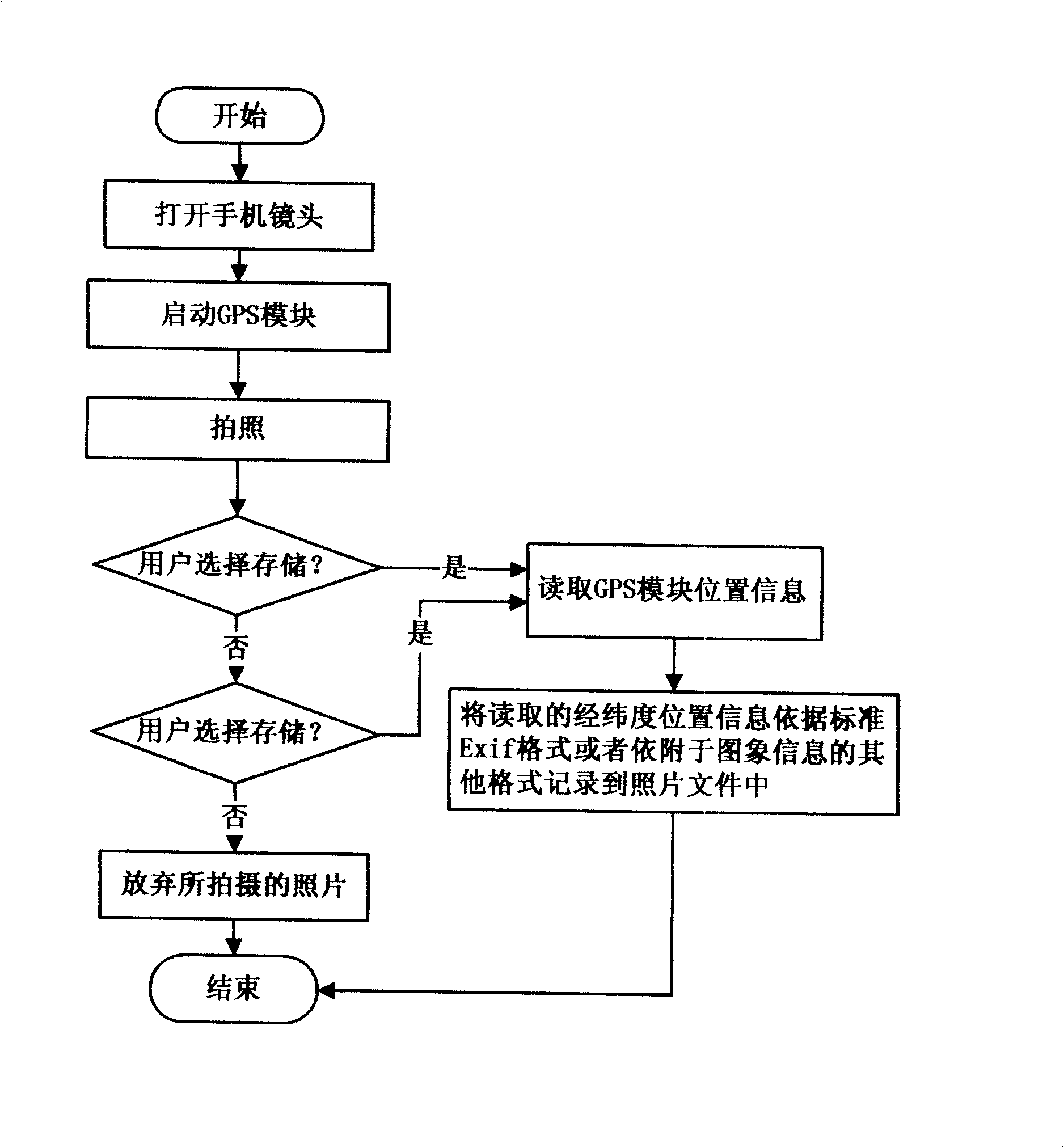Method for implementing navigation by photograph based on mobile phone
A photo and mobile phone technology, applied in the field of navigation, can solve problems such as troublesome search, difficult search, inaccurate destination text memory, etc., and achieve the effect of improving efficiency and accuracy
- Summary
- Abstract
- Description
- Claims
- Application Information
AI Technical Summary
Problems solved by technology
Method used
Image
Examples
Embodiment 1
[0023] User A stays in a hotel on a business trip, and before he drives out to do errands, follow the steps below:
[0024] Step 1: Start the camera function of the mobile phone, and the mobile phone automatically activates the GPS positioning function;
[0025] Step 2: when taking a picture, the camera module invokes the location information storage module to record the location information when taking a photo on the photo file with the standard Exif format or other formats attached to the image information, thereby realizing the association of the photo and the latitude and longitude location information;
[0026] Step 3: store the photo together with the position information recorded in the photo file in the standard Exif format or other formats attached to the image information as a standard photo file on the mobile phone storage medium (FLASH, SD, etc. class storage media). The file name can be automatically generated, and the user can modify the photo file name, such as...
Embodiment 2
[0032] When user A needs to find user B, and user A does not know the location of user B, user B can perform the following operations:
[0033] Step 1: User B activates the mobile phone camera function, and the mobile phone automatically activates the GPS positioning function;
[0034] Step 2: when taking a picture, the camera module invokes the location information storage module to record the location information when taking a photo on the photo file with the standard Exif format or other formats attached to the image information, thereby realizing the association of the photo and the user B's location information;
[0035] Step 3: the photo is stored on the mobile phone storage medium as a standard photo file together with the location information of the user B recorded in the photo in the standard Exif format or other formats attached to the image information (the FLASH that the mobile phone is equipped with or the user purchases separately, SD and other storage media). T...
Embodiment 3
[0041] User A’s mobile phone just stores a photo with GPS location information uploaded or downloaded to the mobile phone through a digital camera or computer in the early stage, and the location of this location information is exactly the destination to be navigated, then user A operates according to the following steps :
[0042] Step 1: Start the mobile phone photo viewing software, move to the corresponding photo, select "Navigation" (or similar menu) in the function menu, and the reading software that reads the latitude and longitude position information on the photo in the navigation system starts to read in standard Exif format Or the longitude and latitude position information recorded in the photo file in other formats attached to the image information;
[0043] Step 2: The navigation system matches the input parameters of the read longitude and latitude position information to the electronic map, and uses this point as the navigation destination;
[0044] Step 3: Th...
PUM
 Login to View More
Login to View More Abstract
Description
Claims
Application Information
 Login to View More
Login to View More - R&D
- Intellectual Property
- Life Sciences
- Materials
- Tech Scout
- Unparalleled Data Quality
- Higher Quality Content
- 60% Fewer Hallucinations
Browse by: Latest US Patents, China's latest patents, Technical Efficacy Thesaurus, Application Domain, Technology Topic, Popular Technical Reports.
© 2025 PatSnap. All rights reserved.Legal|Privacy policy|Modern Slavery Act Transparency Statement|Sitemap|About US| Contact US: help@patsnap.com


